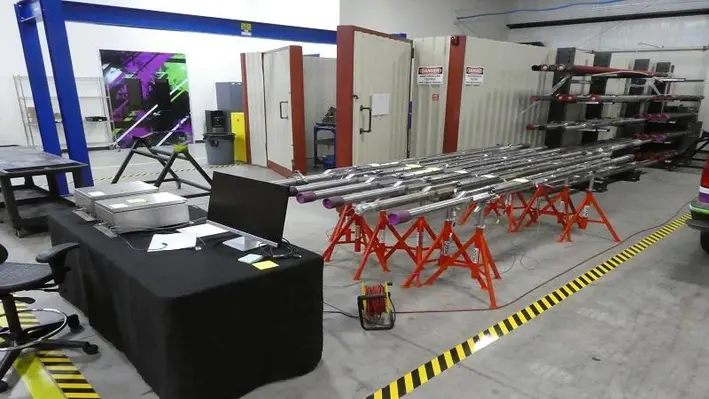

In the build-up to the Offshore Well Intervention West Africa conference, Offshore Network spoke to Silverwell Energy, a global provider of Digital Intelligent Artificial Lift (DIAL), as the company prepares to deploy its first systems to the region in 2022.
Explaining the inspiration behind the solution offered by the company, which will be making its way to West African waters soon, Abdel BenAmara, Vice President for Silverwell’s Middle East and Asia Pacific regions, stated “The majority of the world’s gas lifted wells are under-optimised. This incomplete production optimisation, coupled with excessive intervention costs and risks, presents an opportunity to re-imagine gas lift well design and operating principles. It has been estimated that addressing this opportunity delivers a production uplift approaching 20%. Optimising gas lift systems with existing technology is typically time consuming, costly and risky.”
BenAmara elaborated on the subject of well intervention and commented that frequent interventions are required with associated lost and/or deferred production. Traditionally it was not possible to make on-demand in-well adjustments to gas lift injection depth and rate to address these challenges. Further, it’s not easy to make data-driven decisions about these adjustments to assure continuously maximised and stable production.
Silverwell has therefore sought to overcome the production constraining limitations of existing gas lift technology with the development of their digital in-well integrated interventionless gas lift optimisation system called DIAL (Digital Intelligent Artificial Lift).
BenAmara continued, “The system consists of multiple DIAL units, tubing conveyed and installed along with the tubing string during a workover operation. Each DIAL unit can include up to 6 independent injection orifices, each individually controlled from the surface, with a large spectrum of gas injection rates. The operator can vary the gas injection rate by opening or closing valves, in any combination, which can each have a different port size, giving the operator a huge range of possible injection rates.”
“The system is controlled by a Surface Control System (SCS), connected to all DIAL units, in a multidrop configuration through a single downhole electrical control line (TEC) which is typically ¼” in diameter. DIAL units are spaced using maximum available surface gas injection pressure, without any pressure drop required between each station, since the opening of the valves are digitally controlled and not impacted by downhole pressures or temperature. The upper units in the completion are typically used for well unloading requirements and the lower units are the operating units - used to adjust gas injection depth and rate based on reservoir pressures and other well parameters. Each DIAL unit is also equipped with pressure and temperature sensors giving full visibility of the well’s downhole conditions.”
DIAL systems in operation
DIAL systems were successfully installed in America, Middle East and Asia Pacific regions, and these deployments resulted with average oil production gains of 10 - 20% for single string completions and 40%+ for dual string completions. Other benefits also included gas consumption reductions and significant OPEX savings by avoiding intervention costs typically required for gas lift operations.
Silverwell will be deploying its first systems offshore West Africa in 2022, with a Major IOC, marking the start of its operations in the region, with ambitious development plans beyond these initial deployments.
BenAmara added, “This disruptive technology has the potential to revolutionise gas lift operations in West Africa, which is one of the major artificial lift techniques used in the region. By digitising gas lift operations, and eliminating well intervention requirements, it will enable gas lifted wells to reach their full potential.”
To hear more about the offshore well intervention opportunities and challenges in West Africa, follow this link: https://offsnet.com/owi-wa
About Silverwell:
Silverwell is the global developer, manufacturer, and installer of digitally intelligent gas lift production optimisation systems for the oil & gas industry. They are a leader in automation of gas lifted production and apply patented technology so that more data for less uncertainty in production management decisions enables more production with less intervention.
Silverwell is certified to ISO 9001:2015 Quality Management System and ISO 45001:2018 Occupational Health & Safety.
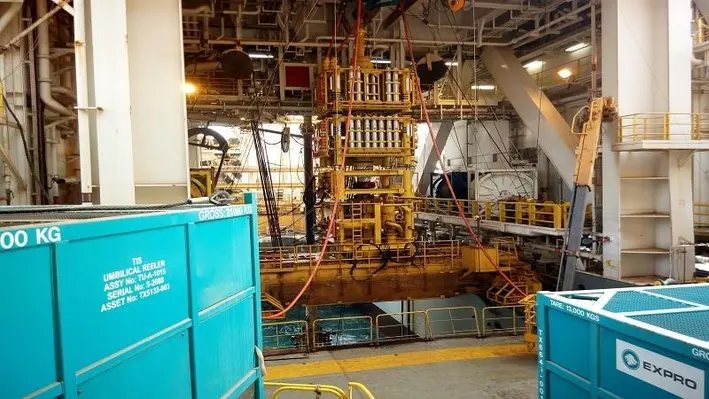

Expro, a leading international oilfield services company, has successfully completed an integrated plug and abandonment (P&A) contract valued at more than US$20mn for a subsidiary of PETRONAS, PC Mauritania 1 Pty Ltd (PCMPL), which manages offshore operations in Mauritania, West Africa.
The well intervention scope of the P&A project utilised Expro’s integrated Open Water Intervention Riser System (OWIRS) for successful intervention and barrier placement on 15 wells for PCMPL’s Chinguetti Field Phase II works. The system’s compact nature provided considerable time savings by retrieving the subsea trees without an additional run. This was further enhanced by the efficient parallel deployment of the OWIRS and rig blow out preventor from the auxiliary well and primary well centre through the rig’s dual derrick capabilities.
Expro’s onshore project management team, based in Kuala Lumpur and locally onshore in Mauritania, supported PCMPL throughout the project planning and execution phases. Expro provided a range of integrated services, including the subsea well access system, surface flowhead, umbilicals, topsides control equipment and installation and an intervention workover control system (IWOCS) package for controlling both the OWIRS and Xmas tree systems. Worldwide Oilfield Machine (WOM) worked closely with Expro as an alliance partner providing the subsea well access system and a technical support team.
Graham Cheyne, Expro’s Vice President of Well Access and Subsea, commented, “The OWIRS system is a highly reliable compact system with an extensive track record in riser to surface subsea well access operations. This system performed over 250 functions during the project with 100% operational uptime and no non-productive time (NPT) incurred. To further demonstrate its reliability post operation, a gas testing programme of work was successfully performed on completion of the 15 wells, prior to any post job maintenance being carried out and before readiness for the next project.
“This campaign was our first venture into the intervention riser system market. Despite the logistical and HSE challenges created by the global pandemic, we are proud to have demonstrated our technology’s success and integrated ability for these types of subsea P&A operations, supported by our team’s extraordinary performance, commitment, flexibility and dedication to PCMPL.
“The campaign’s success, combined with our continued expansion of our subsea well access offering, has helped us to secure several new contracts across Asia and Australia, enhancing Expro’s already strong presence in the subsea well access market.”
Sustained growth expected
Expro’s second quarter results show that the company delivered solid financial and operational performance, including 13% sequential revenue growth globally, and particularly strong growth in its Europe and sub-Saharan Africa (ESSA) and Asia regions, as demand increased for production optimisation services.
Mike Jardon, Expro’s CEO commented that the company is seeing “strong signals of a multi-year recovery” and is expecting sustained growth across all of its businesses and geo-markets.
“We currently expect at least modest revenue and margin momentum for Expro over the next couple of quarters, driven by an overall increase in international activity, and positive trends in well testing and production services and well intervention and integrity services, in particular,” he said.
“Beyond the next couple of quarters, an expected recovery in offshore development across geographies reinforces our confidence that Expro is well-positioned for sustained growth, which we believe will be driven by increasing demand for subsea well access services and more complex well construction services, respective strengths of Expro and Frank’s International with whom we announced a definitive merger agreement on March 11, 2021.”
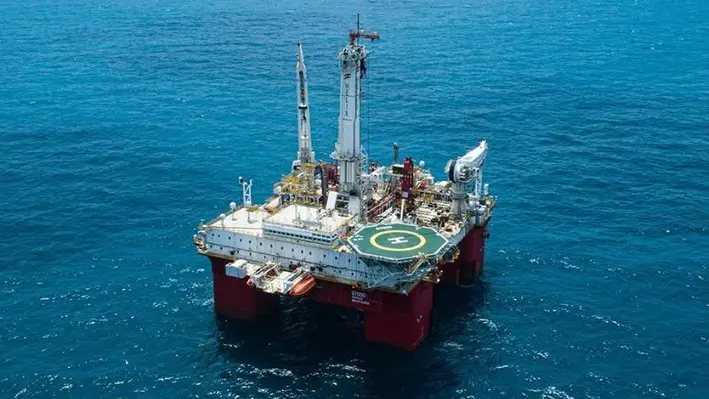
 As the Offshore Well Intervention West Africa conference draws near, Offshore Network spoke to David Carr, Senior Vice President – Helix Well Ops (UK) Ltd. to gain a preview of the well intervention market and appetite in the region, and the latest on Helix’s activities there.
As the Offshore Well Intervention West Africa conference draws near, Offshore Network spoke to David Carr, Senior Vice President – Helix Well Ops (UK) Ltd. to gain a preview of the well intervention market and appetite in the region, and the latest on Helix’s activities there.
The Q7000 continues to shine
Carr began by discussing the Q7000, a DP Class 3 semisubmersible well intervention vessel that arrived in Nigerian waters for its pilot project at the start of 2020. Carr stated, “The first operator was an international major in Nigeria with whom we had scheduled to conduct a five well campaign. We had a new vessel, a new crew, a new well access package and we were working in a new country, and yet we completed the campaign around 25 days quicker than expected.”
“This vessel has been operated since it’s inception as a fully integrated package, utilising the services of Schlumberger, our partner in the Subsea Services Alliance.”
“During the last well, the pandemic hit, so unfortunately we had to return to Tenerife, however we continued conversations with Total, Chevron and Shell in Nigeria over Teams. Before the end of last year, we mobilised the vessel again and completed a five well campaign for Total and one for Chevron. In the last few weeks, we have begun a campaign for SNEPCo which is from five to seven wells. It is most likely we will finish the current campaign in early Q4 2021 and stack the vessel in a nearby port before recommencing operations in January 2022. After that, we are in discussions with two other major operators and a potential third to keep Q7000 in country, so we will be doing projects there next year as well.”
“After these projects are completed, the Q7000 will move on to Australia, but to do so we go right past Angola. We are in discussion with a couple of operators to do some work in the country during the second half of next year before moving on,” Carr added.
Carr also took time to explain how the Q7000 crew is rotated in the wake of the pandemic by noting that before members were rotated monthly but now, due to Covid quarantine rules, they do six week stints away from home in order to isolate. He noted that the company has been massively helped by their policy of utilising local content ‒ around 65% of the Q7000’s crew is Nigerian, and those crew do not have to go through international protocols, just Helix’s.
Carr added, “Nigeria is a very good place for local talent. The offshore oil industry has been established in the country for more than 40 years, so in terms of getting quality wireline, deck, or downhole service crews, the region is well supplied. We comply with the local content rules in the country, enforced by the Nigerian oil regulator (NAPIMS), but we don’t just comply by hiring cooks and cleaners, etc. Instead we hire and train DP officers, junior vessel engineers and more. All of the Schlumberger’s crew are Nigerian. We had nearly 30 Nigerian crew members fly to Singapore before the Q7000 set sail, so they knew the vessel, procedures and safety protocols well before arriving in West Africa.”
Collaboration
Helix has established a strong relationship with NAPIMS by providing opportunities for local Nigerian engineers, and imbuing them with transferable work skills to remain in the region. This relationship is essential when finding new opportunities for their vessels.
As Carr explained, “We speak to all the operators in the region, but not necessarily at the same time. NAPIMS does though, because it has an interest in increasing production for the whole of Nigeria. NAPIMS allows these operators to spend OPEX money on well intervention and they encourage this type of work to be taken up.”
“Additionally, each operator is ultimately aiming to increase production for themselves, whereas NAPIMS is trying to do it for the whole country. Through collaboration and discussions on where campaigns can fit in together they can all do this more effectively, but it is the NAPIMS that is the glue to bind them all together.”
Carr also added that Helix are not the only LWI service company working in the region and highlighted that while his company competes with many others, all are keen to see success continue within the segment. He commented that the last thing he wants is for them to have a bad job and that some of them are doing fantastic work ‒ such as Oceaneering who are working with BP in Angola currently.
The challenges and opportunities of West Africa
The success of the Q7000 in Nigeria has shown that there are opportunities to be found in the region, and by operators communicating and attracting such vessels to the region they have the chance to enhance well production and increase the well life of the rapidly ageing subsea wells located there.
However as Carr noted, the region can be a challenging place to operate. He said, “What typically kills well intervention work in West Africa is the transit cost of the vessel all the way from Europe or Gulf of Mexico (GOM). If you want to use a vessel in West Africa, you will probably have to sail it from the North Sea, which is very expensive. When we brought the Q7000 here, we agreed to pay for mobilisation but we needed to get a guaranteed amount of work to recoup this cost. Again, this is where collaboration between operators becomes necessary. When operators discuss and work out how the vessel will be utilised, it provides the opportunity to remain in the region longer.”
A promising future?
It is no secret that sub-Saharan Africa will have one of the oldest average ages of wells in the coming years, and as energy demand increases in line with the population, well intervention is predicted by many to have an important role in the region’s future. Weighing in on this subject, Carr said, “Nobody predicts the price of oil will reach such a height that exploration to replace reserves will be high on the agenda of many operators. As we know, companies like Total, Shell, BP are making big transitions into renewable energy and they will not want to be putting masses of capex into new exploration and development.”
“They are going to have to maintain their reserves by managing the wells they have; essentially, well intervention is going to have to be a big part of this. Unfortunately, the obviousness of that statement does not always translate into money being spent.”
“Adding to this, the well interventions that we (and our competitors) are doing now are reactive ‒ fixing things that are broken. What we need is a more European model of proactive work. Going into wells that are producing and making them more efficient. Doing well intervention earlier in their life so that they can maximise economic returns and continue production for many years to come.”
Rig vs riserless
One hot topic that has been debated in the region is the use of riserless over riser-based solutions for well intervention activities, with some touting the former as the answer to West Africa’s ageing well problem.
Carr took a more measured approach and commented, “There is an impression in the market that riserless equals cheap and at times this may be true. But we find that in the deep waters of West Africa, with the complexity and lack of supply chain in the area, sometimes it is less practical. With the riser vessels there is more contingency which leads to better outcomes in a place with less predictable wells. One of the criticisms of riser-based is it takes long to deploy the system and get onto the well, this is true if it is only deployed once. However, Helix often does multi-well campaigns and have the ability to deploy the system once, before hopping over to the next well and not recovering it in-between. In such cases it is every bit as fast as a riserless package.”
“At the end of the day it is going to be a combination of the two, and our intention is to have both capabilities in the region. In fact, in the future our intention is to bring one of our large monohulls from Brazil to be permanently stationed in West Africa. Our vessels (Siem Helix 1 and Siem Helix 2) currently in Brazil have each done more than 50 jobs each in deep water and complex geologies so they should be well suited. With those vessels we anticipate we can have riserless and riser-based capabilities. If we can get a minimum commitment from one or more of the operators in the region this will come to fruition,” Carr concluded.
Sign up for West Africa's leading well intervention conference to hear more on reducing costs, overcoming logistical challenges, increasing well performance and the future of the market: https://offsnet.com/owi-wa/register
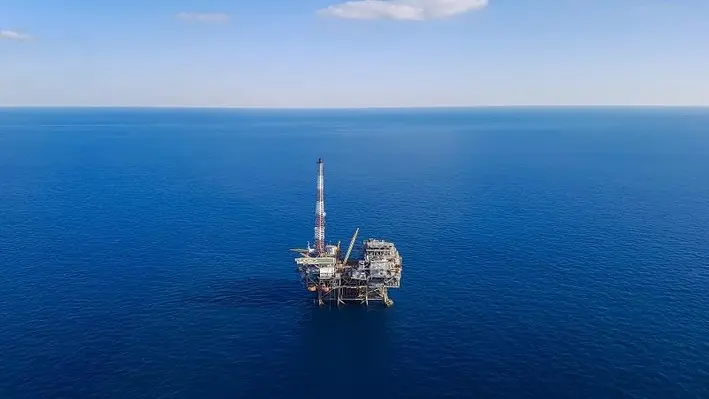

A report published on Reportlinker.com, titled ‘Well Intervention Market by Service, Intervention, Application Well Region – global Forecast 2026’ has suggested that the global well intervention market is projected to reach US$9.3bn by 2026, up from US$7.6bn in 2021.
This growth represents a steady CAGR of 4.2% with the main driver being the growing need to maximise product potential of mature oil and gas fields. This increasing demand for offshore and subsea well intervention could off excellent opportunities for service companies offering such services.
Fast growth
The report continues by breaking down this market growth and suggests that the horizontal well segment, by well type, is projected to dominate the global well intervention market due to the increasing horizontal directional drilling activities to optimise production from wells. Such wells are expensive when compared to vertical wells, but they are often preferred due to their efficiency in increasing oil field production and their ability to access subsurface reservoirs that are not directly accessible from above.
The offshore segment
By application, the offshore segment is expected to be the fastest growing market from 2021-2026 as companies have been exploring offshore locations for oil and gas production owing to the fact that offshore locations have a large number of untapped reserves.
Despite fluctuating oil prices, the application of offshore well intervention services is expected to rise, attributed to the increasing deep and ultradeep water drilling and production activities and an increase in the number of maturing subsea wells.
North America dominates market
According to the report, North America represents the largest and the fastest-growing region in the well intervention market and is expected to dominate the global well intervention market between 2021 and 2026. The region has the largest shale reserves, which makes it a lucrative market for drilling activities and for oilfield service providers.
According to the US Energy Information Administration, in 2017, the region had 307.9 trillion cu/ft of shale reserves, out of which only 18.6 trillion cu/ft have been produced in the same year. Thus, the vast potential from the shale reservoirs has been attracting more drilling operations in the North American oil industry. Profitable drilling activities are likely to create enough opportunities for well intervention operations.
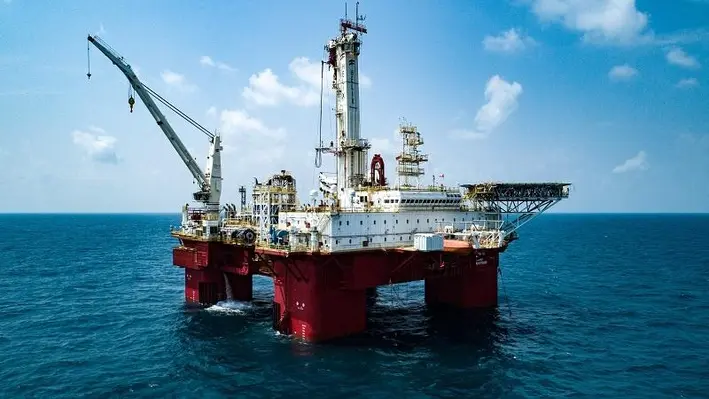
 At the Virtual Offshore Well Intervention Europe Conference 2021, Neil Greig, Sales Manager at Helix Energy Solutions, showcased the Q7000 DP vessel and how innovations incorporated throughout its design has already delivered cost-saving and HSE benefits in its first few pilot outings.
At the Virtual Offshore Well Intervention Europe Conference 2021, Neil Greig, Sales Manager at Helix Energy Solutions, showcased the Q7000 DP vessel and how innovations incorporated throughout its design has already delivered cost-saving and HSE benefits in its first few pilot outings.
As Neil pointed out, the Q7000 was born out of years of experience Helix has accrued from servicing more than 1,500 subsea wells. In terms of riser-based operations, the company has a track record going back to the 1990’s and the Q7000 is the latest in a long line of successful vessels including the Q4000, the Q5000, Siem Helix 1 and Siem Helix 2. All of these have similar capabilities and, in fact, the Siem Helix 1 and Siem Helix 2 have the same topside equipment as the Q7000 so, although the evolution has ensured the latest vessel has gained competency an efficiency, operating this vessel is not new territory for the company.
The Q7000 in detail
As Neil continued, the Q7000 is a self-propelled DP Class 3 semisubmersible that can move at 10.5 knots. In order to access subsea wells it uses the Intervention Riser System (IRS) which enables access to both convention and horizontal trees in depths down to 10,000ft/3000m but equally can be deployed in shallower waters to around 85m. Applications include coiled tubing, electric line, slickline operations, and the riser can be used as a conduit for cementing operations, well abandonment and tree change outs. As standard the system on Q7000 is rated to 10,000 psi but Helix have a 15,000 psi system should there be a requirement for use on HPHT wells. The 7-3/8 through bore diameter allows the ability to pull large OD crown plugs in horizontal trees.
The vessel has benefitted immensely from the Subsea Services Alliance, a strategic partnership Helix formed with Schlumberger to enhance their well intervention services. Due to the advances made from the alliance, the Q7000 no longer requires two separate crews for slickline and wireline which are never on deck together, as was often the case with older vessels, but instead brings them together in a multi-skilled crew. The result is a reduction in crew size from 14 to 8 people for these operations and for coil tubing and CTS/Testing, the crew size is brought down from 25 to 20. This results in remarkable cost savings to the client so that once the reductions and personnel transfers are calculated more than US$500,000 can be saved from a campaign of 100 days. Additionally, a smaller crew means reduced HSE exposure, which is of paramount importance in the current Covid-19 environment.
Operations in Nigeria
To demonstrate the capabilities of the vessel, Neil ran through the campaigns that it has conducted since entering operation in early 2020. In that year, it was commissioned by a major operator to carry out a five well campaign, starting in January, for a wide scope of work including water shut offs/zonal isolations, hydrate millings/CT clean up and remedial safety valve operations all with production enhancement objectives. These were conducted 65 miles off the coast of Nigeria in water depths of 1,210m.
Despite encountering inevitable challenges inherent with using a brand-new asset and having to manage Covid-19 implications which struck half-way through, the campaign was a resounding success with every stakeholder pleased with the performance. All five well operations were completed in a single IRS deployment with four subsea well hops and it took 25 less days than planned achieving 96.86% uptime.
When the Q7000 returned to Nigeria at the start of 2021, to perform another five well campaign further offshore and in deeper water (90 miles from land in water depths of 1360-1560m), Helix had to contend with a number of new logistical challenges due to Covid-19 protocols and the fact the vessel had to be taken out and re-established in Nigerian waters. Despite this, again the Q7000 ran a successful campaign effectively servicing the five wells across two separate fields. It did so with >97% uptime with three well hops and zero delays in mobilisation of tools and personnel.
Capturing value and reducing HSE exposure
From the testing and pilot campaigns of the Q7000 it was clear that the vessel has the ability to provide tangible benefits which Neil guided the audience through. One of the most obvious was the ability to use the IRS in a single deployment and run it between each well. Combined with the speed and manoeuvrability of the vessel, this meant that each run was achieved far quicker and single trips could be completed in hours not days. Additionally, as all the tools are changed at surface level, changing between slickline/E-line/coil tubing (which could take longer than a shift on a semisubmersible vessels) can be done in hours. Where riserless solutions are applied in deep and ultra deep water applications, there are significant time savings deploying the riser system once rather than running tools and equipment through the water column between each run. For a nine run total operation including two slickline and seven E-line this could usually take upwards of nine days, but using the Q7000 the operation was completed it in just over three.
Aside from capturing value, Neil also demonstrated how the Q7000 has been carefully designed with safety in mind to minimise the risk of accidents onboard. Working from height has been removed where possible and the risks inherent with manual handling have been designed out. Most notably the ‘walk to work’ system ensures that personnel can access the work site without needing harnesses and permits and their tools are safely deployed with automated systems.
The Q7000 has arrived with the full weight of Helix’s extensive knowledge base and experience and has been designed with the latest innovations to ensure it delivers maximum efficiency, delivers value and keeps its crew as safe as possible while doing so. It is no surprise that the vessel has already been hired to conduct more work in Africa in 2021 and potential abandonment scopes in 2022 and will not doubt see an extensive workload over the coming years.
To learn more about the Q7000, follow the link below:
https://www.helixesg.com/what-we-do/our-assets/q7000/

 Petrofac has secured a contract with BP to develop operational procedures for the Greater Tortue Ahmeyim (GTA) Project in Mauritania and Senegal.
Petrofac has secured a contract with BP to develop operational procedures for the Greater Tortue Ahmeyim (GTA) Project in Mauritania and Senegal.
Centred on minimising risk and harm to personnel, plant and the environment, the procedures will encompass all offshore operations, including subsea, floating production storage and offloading (FPSO) and hub.
The Tortue Ahmeyim gas field, with estimated resources of 15 trillion cu ft of gas, is located offshore the border between Mauritania and Senegal in water depths of more than 2,000 metres. Spanning five blocks (three in Mauritania and two in Senegal) in addition to the GTA unit, the LNG project will have BP as operator and is being jointly developed by BP, Kosmos Energy, Societe des Petroles du Senegal (Petrosen) and Société Mauritanienne des Hydrocarbures.
The final investment decision (FID) for phase 1 of the project was taken in December 2018 with the FID for phase 2 expected in 2022. Initial production was projected in 2022 before Covid delays caused this to be pushed back to 2023. Once completed, the GTA LNG project is expected to produce up to 10mn tonnes of LNG a year.
The integrated gas value chain and near-shore liquefied natural gas (LNG) development will export LNG to global markets as well as supplying gas to Senegal and Mauritania.
On the opportunity to take part in this exciting project, Steve Webber, Senior Vice-President of Operations at Petrofac, commented, “BP is an important longstanding client and we look forward to supporting them in operating safely and responsibly, in their delivery of the GTA Phase 1 Project, which is creating a new LNG hub in Africa.”

 The Phase II plug and abandonment (P&A) campaign of the Chinguetti Field offshore Mauritania, which was stalled due to Covid-19 complications, has seen the successful intervention and barrier placement on all 15 wells since its resumption with projected completion of the entire abandonment scope by the end of the year, according to Expro and PETRONAS.
The Phase II plug and abandonment (P&A) campaign of the Chinguetti Field offshore Mauritania, which was stalled due to Covid-19 complications, has seen the successful intervention and barrier placement on all 15 wells since its resumption with projected completion of the entire abandonment scope by the end of the year, according to Expro and PETRONAS.
The Phase II P&A campaign
Phase II of the P&A campaign on the PETRONAS-owned Chinguetti Field began in late 2019, carried out by Pacific Drilling LLC, who had commissioned the help of Expro to provide an Intervention Riser System (IRS) and associated surface support equipment to be deployed from the Pacific Drilling drillship, the Pacific Santa Ana.
The award to Expro included a range of services such as the subsea well access system, surface flowhead, umbilicals, topside control equipment and IWOCS (installation and workover control system) package. Expro would also provide an onshore project management team to support Pacific Drilling throughout the project planning and execution phases. For their part, over the course of the 2019 summer, Expro carried out system integration testing on the equipment before shipping and installing it on the Pacific Santa Ana in Las Palmas in October 2019.
Expro, in turn, requisitioned for the campaign the support of Worldwide Oilfield Machine (WOM) who were contracted to provision the subsea well access system and a technical support team. This formidable team were contracted to complete the Phase II P&A project in Mauritania, which would take an estimated 360 days.
Covid-19 stalls progress
By late 2019 the campaign was in full swing (with the abandonment of the first well completed in December) so that by the end of March, subsea well access had concluded on nine of the 15 wells. Of course, then the Covid-19 pandemic struck and operators and oilfield owners across the world were forced to stall projects and forego operations as they dealt with closed borders, new quarantine rules, social distancing and keeping their employees safe. Such was the case on the Chinguetti field, where a strong start to the campaign made at the beginning of 2020 was drawn to a sudden halt with PETRONAS, due to the enforcement of travel restrictions, forced to declare force majeure on its contract with Pacific Drilling effective on 29 March 2020. Subsequently, Pacific Drilling agreed to leave the rig on stand-by at 35% of its contractual day rate until March 2021 and on the 31 March made sail for Las Palmas.
Keith Allan, Global Sales Manager at Expro, spoke to Offshore Network to reveal the challenges that his company faced during this difficult time, and how the rig was eventually returned to Mauritanian waters. He commented, “The main challenge we faced at that time was around travelling and personnel. Although we were shutdown at the end of March we still had some personnel in West Africa for a few months and faced challenges getting them home due to all borders being closed.
“We also had to keep skeleton crews on the vessel throughout the pandemic to ensure all routine and preventative maintenance was carried out on the equipment. They continued to perform to extremely high standards considering the global situation that meant extended trip durations, isolation periods and everything else that went along with travelling during the pandemic. The team were a critical part of the success of this project, providing a seamless operational start up when operations resumed.”
Returning to Mauritania
As Mr. Allan alluded, eventually there was light at the end of the tunnel and on 23 December 2020 the Pacific Santa Ana departed Las Palmas to resume the campaign in Africa. Since operations started up again in January, the subsea well access operations have been carried out effectively and efficiently and Allan proudly reported that as of 4 April the remaining six wells had been successfully intervened and Expro’s equipment offloaded.
Mr. Allan continued, “After the pandemic the six wells were challenging with regards to personnel movement, however all equipment and personnel continued to perform to an extremely high standard. One of the highlights for us was the ability to retrieve the Christmas trees with the IRS without requiring an additional run subsea. The IRS system’s compact nature combined with Pacific Drilling’s dual Derrick capabilities saved considerable rig time.
“This was Expro’s first venture into the IRS market therefore, we had to form new offshore and support teams to ensure we provided a quality service for the duration of the campaign. Our team’s skillsets were easily transferred to run this new system, and although we did employ experienced personnel, the crew was mainly made up of our people from the existing subsea product line.
“On a management level, it worked well. We had project managers onshore in Mauritania working from the Pacific Drilling offices to provide support for the operations duration," Mr Allan added.
Eyes set on the future
With the initial P&A of the 15 wells on Chinguetti Field the campaign has nearly reached its conclusion with some more work required to mop up the heavily lifting that has just been completed. PETRONAS, in a statement to Offshore Network, have confirmed “The campaign is progressing as planned and is projected to be completed by the end of this year.”
With vaccine distribution picking up speed across the globe and with the industry continuing to show the resilience and ability to work round the restrictions whilst maintaining the safety of their employees (as this campaign showed), there seems little reason to doubt this projection.
For Expro’s part, aside from some equipment remaining onboard for operations in a month or two, their role has been played to fruition and has marked a successful venture, which has overcome some serious challenges in the process.
As Mr. Allan concluded, “This was our first venture into the intervention riser system market, and we were able to carry out the campaign with no non-productive time (NPT) incurred. From an Expro point of view this has been a very successful project and something we are very proud and grateful to have played our part in. The success of this project has led to another contract award for a client in Australia, for a very similar scope of work and will commence in early 2022 once the equipment has completed a maintenance campaign in preparation for the work.
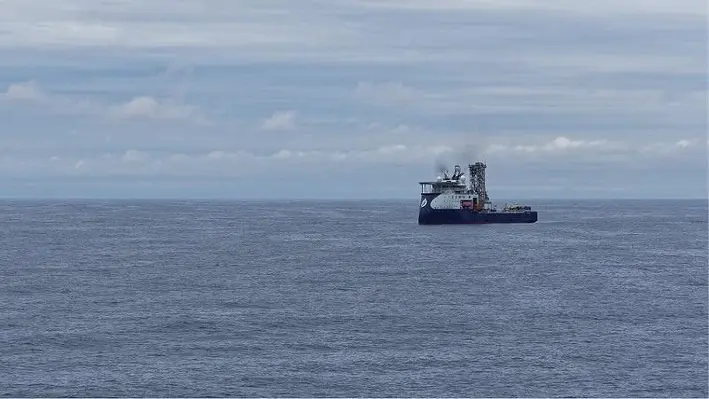

At the subsea sub-Saharan Africa well intervention webinar, hosted by Baker Hughes, Bayo Ojulari, Managing Director of Shell Nigeria Exploration and Production Company (SNEPCo), participated in a fiery discussion on the advantages of riserless light well intervention (RLWI) compared to rig-based, riser intervention alongside host Sola Adekunle, Managing Director of Cranium Engineering; Matt Vick, Senior Subsea Engineer at BP; and Feyi Okungbowa, Executive Director of Baker Hughes.
Beginning the session, host Adekunle, explained that since its introduction in the North Sea in the 1980’s more than 1,000 wells have been intervened across the world by means of RLWI bringing tangible benefits such as higher operator efficiency, lower spread rates and increased manoeuvrability. This begs the question, is it a no brainer? And if so, why in the SSA market, where wells are in dire need of optimisation (the average age of subsea wells will be the highest in the world by 2025), has RLWI been so underutilised?
The benefits of RLWI
Vick, certainly believed there was no question that RLWI was the way forward and commented, “BP has a long history with RLWI across the world and we are pushing for this to be used more. It is high capability, especially as wireline and E-line advances; it is more efficient; and has a lower cost in general.”
“A lot depends on the scope as well. You do lose some efficiency on downhole runs due to the fact you are recovering tool strings through open water and on a wireline run by wireline run basis it is a little bit slower. But you tend to gain this efficiency back when it comes to mobilisation and then getting the vessel offsite when the job is completed. So, you gain on the back end and beginning to offset the speed you lose in the middle (and you can even optimise the sequence in the middle). So even if it does take longer on the critical path, you will still have a lower spread rate and will achieve a big gain.”
As Vick outlined however, there are still some things where you do need a high pressure intervention riser like coil tubing and cement spotting, but really there is not a huge number of operations that riserless cannot accomplish outside the current realm of copper tubing. “Right now, BP’s push is to go with riserless systems as you can structure interventions to not require coil tubing or capabilities of heavier based solutions. You can accomplish 95% of your objectives at a much lower cost and this has been our push in shallow and deep water wells.”
“There are also safety benefits as well. With riser interventions you often have a direct conduit from well to the surface, meaning employees are working in close proximity to live well hydrocarbons. However, with riserless you don’t bring tool string back to the surface through a hydrocarbon field riser, so the only hydrocarbons you should see coming back to the surface is going to be flushing lubricator out to get your well shut in. Personnel safety is therefore increased with some real improvements in HSE,” Vick concluded.
The SSA market
Ojulari, commented that around 15 years ago when the industry started to really develop deepwater wells in SSA it was more straightforward: all that was needed was a rig to drill wells that were very high producing.
Ojulari said, “Unfortunately, the 50,000 barrels per day wells are no longer very much in play now and most drilled are now producing at lower rates. Many are becoming old and natural production declines by about 10-15%. Now the challenge is that in order to sustain production we try to drill up wells and utilise rig-based intervention, but despite that the SSA region still suffers about 6-8% decline. This means we cannot drill or rig- based intervene our way to fully address our production decline. In order to fully meet this, we need to leverage the rigless and riserless intervention for us to be able to capture the low hanging fruits. We have been a bit slow going for it but for me there is significant opportunity here.”
Holding RLWI back?
Delighted with the comments from Ojulari and Vick, Okungbowa, added, “Everything said so far is music to my ears as a service provider. Baker Hughes has made a lot of investment in RLWI not only in SSA but globally, and it is an area of growth we see. But we cannot understand why we are not seeing more RLWI in SSA? In 2019 there were a couple of interventions, and obviously 2020 was disruptive but even still the opportunities were just not there. With the ageing of the assets and store base I struggle to understand why this market is not moving as quickly as it should- all the equipment is ready in the region, we have spent years training people for interventions and yet the uptake is not there.”
Answering Okunbowa, Ojulari commented that perhaps RLWI was not being taken up as much as it should due to the lack of awareness of business owners and business decision makers. In his experience, the main discussions around this form of intervention were centred around limitations and risks and often the total cost saving is not immediately obvious to the core leaders. “For me, the first thing that needs to happen more is around better education, and this seminar is a good example. More engagement and connection in promoting the capabilities of promoting riserless, sharing success and putting into numbers where it can save in comparison to the other options for intervention that we have.”
Collaboration and transparency
The panellist also noted that key to ensuring more RLWI is transparency and collaboration. Building portfolios, and properly evaluating closing wells that require intervention, and then working with other operators to organise campaigns together will ultimately reduce costs and lead to more well optimisations being performed.
Okunbowa said, “What I would say to Ojulari and Vick and every operator is that we need to be strategic, we need transparency and we need to almost become partners. If you bring problems to us we can then bring solutions and help structure it in a way that unlocks value. We have heard of rig clubs but we now need to get comfortable with a vessel club situation. Being able to do a campaign across 3-4 companies back-to-back using the same assets, each operator will see significant cost savings.”
Highlighting the additional value of larger campaigns, Vick added, “You gain efficiency from crews repeating a task, and small learnings can add up. If you have many operators with different wells lined up, you gain efficiency from one well to the other whereas you lose efficiency with one-offs. With drilling operations you can see drilling times cut in half by the end of the campaign, and it is the same opportunity here. As a vessel keeps working you get gains in safety, efficiency, performance across the board. Success breeds success. I feel if we can show this being done with some big campaigns with good results we can get this success moving and more operators will see it makes commercial sense to collaborate.”
Unlocking value
Adekunle concluded the session, “Riserless intervention saves money, increases production and can be used as a production maximisation tool rather than reaction tool. With collaboration between different disciplines, different contractors and services providers you can unlock value for operators. Really it is not about which operator or which service provider, it is about looking and seeing how much value the industry can unlock by using this technology.”
In the panel it was made abundantly clear that utilising RLWI, and collaborating on these campaigns, would ultimately unlock value for industry and these opportunities should be embraced rather than feared; as Okunbowa commented, "Don't be a dinosaur." But what was made clear most of all is that this would only be achieved through conversations such as these, to make clear the benefits, the cost savings, the success stories and not just the limitations of RLWI, to key decision makers and indeed the entire industry.
To listen to the full webinar, click here.
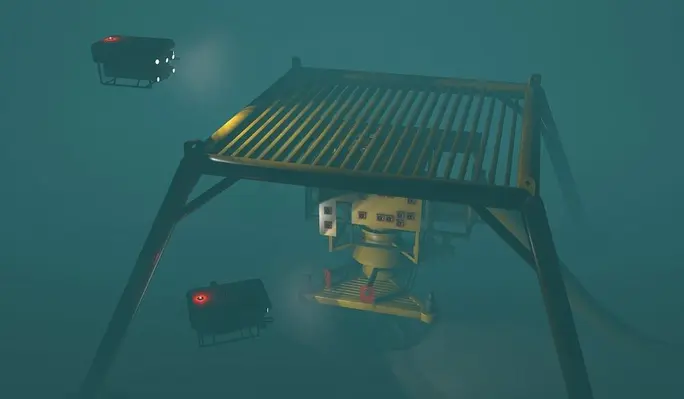

A new partnership between Ashtead Technology, an integrated subsea technology and services specialist, and inspection and asset integrity company Ocean Atlantic Petroleum SA (OAP) has, after successfully executing its first marine services project in West Africa, received awards for further work in the region.
Leveraging their joint capabilities, Ashtead Technology has completed a multi-asset, class-approved mooring inspection campaign for Total E&P Angola in the Girassol and Dalia fields, and has been awarded further work in the Pazflor and CLOV fields.
The underwater inspection scope, which will avoid the need for drydocking, combines Ashtead Technology’s visual inspection, chain cleaning, measurement and 3D modelling technologies, with OAP’s team of experienced offshore technical personnel. OAP’s operations base in the country’s capital city of Luanda will be used to store and maintain the equipment.
“Coronavirus-related travel restrictions have added an extra logistical challenge,” commented David Mair, Business Development Director of Ashtead Technology. “By teaming up with OAP we have solved the problem and can continue to deliver a high quality, reliable service on schedule and within budget,” Mair added.
“This aligns with our overarching strategic focus for West Africa, which centres on providing a broader asset integrity service to clients and supporting local content objectives,” Mair added.
A formidable partnership for the future
Headquartered in Aberdeen, the UK, Ashtead Technology has nine facilities in energy hubs around the world. It has one of the largest equipment fleets in the subsea supply chain coupled with the R&D capabilities to develop bespoke solutions.
Established in 2014, OAP provides a variety of technical services to the Angolan energy sector, including subsea inspection and asset integrity. OAP’s knowledge of the Angola market and in-country technical expertise makes them the ideal partner to support the partnership’s growth ambitions in Angola.
Benoit Peyrichout, Managing Director of OAP SA, said, “Our partnership with Ashtead Technology has created the perfect marriage and a very compelling business proposition for clients in Angola.”
"With our local facilities and strong technical expertise forged with Ashtead’s engineering capabilities and fleet of technologies, we are ideally placed to win further awards and expand both businesses in the future.”
Winning the campaign for Total E&P Angola straight off the bat underlines the strength of the combined offering to operators in the region and indicates there could be much more to come from this partnership in the future.
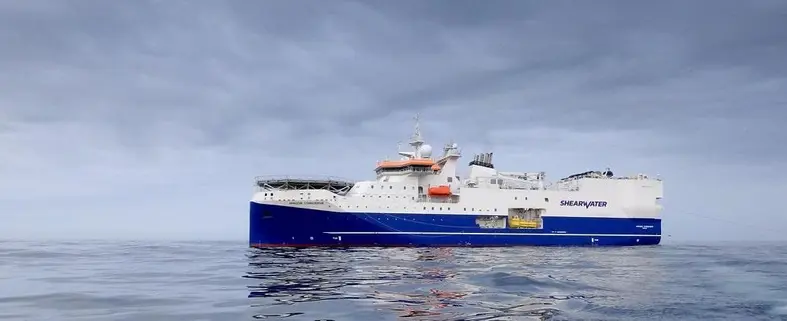

Following a strong performance in February in which the company received four survey contracts, Shearwater GeoServices (Shearwater) have made an impressive start to March with the award of three contracts to conduct surveys in Australia, West Africa and the North Sea.
Australia:
Employing the Geo Coral vessel using a multi-sensory streamer system with a variable streamer spacing configuration, Shearwater have been commissioned to conduct a 3D multi-sensory marine seismic survey in the Otway Basin offshore Australia. The survey, which will take two months to complete, will cover an approximate 2700 sq km and is estimated to commence in Q3 2021.
Irene Waage Basili, CEO of Shearwater, commented, “We see a solid, consistent level of activity in Australia where we have multiple projects booked in 2021. We observe increasing regional demand for our vessels equipped with high-end technology, which is reflected in backlog and utilisation.”
West Africa:
Following the Australian contact, Shearwater have also been employed by Total E&P Angola (Total) to conduct a 4D monitor marine seismic acquisition survey of the GJDR Development area of Block 17. The survey comprises a two-month long project and is expected to commence in Q1 2021. To complete the contract, one of Shearwater’s industry leading multi-sensory equipped vessels will be used in conjunction with source vessels from Shearwater’s fleet.
“As the established global market leader in 4D monitor surveys, Shearwater is pleased to announce the award of this advanced multi-sensory project by Total in Angola. We have seen a notable increase in interest for 4D technology for our clients’ planned projects in 2021, which is demonstrated by the award of this project in West Africa.” said Basili.
North Sea:
Capping off the trio, Shearwater will also conduct a five-month long survey of the Northern Viking Graben area offshore Norway. The 3D multi-sensor survey was awarded by CGG and is expected to commence in Q1 2021.
“This award confirms the strong relationship we have with our strategic partner CGG and we look forward to executing this survey with the highest level of quality and HSE commitment as part of our client’s multi-year project," commented Basili. “With the addition of this award to our backlog, we are now experiencing increasing demand for Shearwater’s multi-sensory vessels for the upcoming 2021 season.”
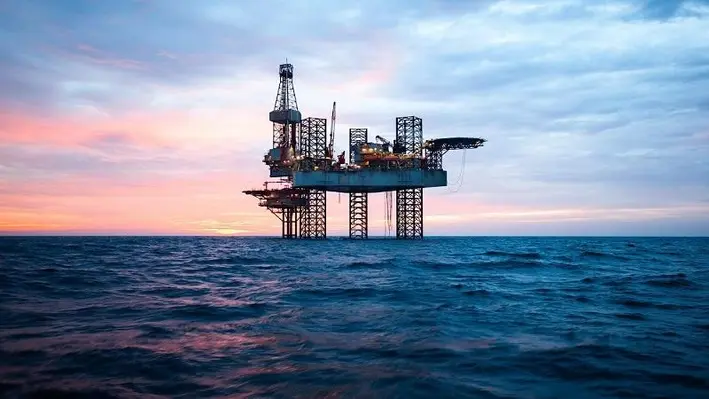

In their 2020 review Subsea 7 reported a net cost of US$70mn through dealing with the Covid-19 pandemic and additional restructuring charges of US$86mn. Yet, despite this, the company suffered no contract cancellations and increased their backlog of work by 20% to US$6.2bn prompting calls of encouragement for the future, especially with the continuing market stabilisation of oil and gas and growth of the offshore renewables market.
In January, to cope with the Covid-induced difficulties and align with their strategic focus area ‘subsea field of the future – systems and delivery’, Subsea 7 streamlined their business by combining their SURF and conventional Life of Field units. The new Subsea and Conventional unit encompasses the full portfolio of services and products dedicated to the oil and gas industry that Subsea 7 has to offer including the integration of IRM and well intervention into the integrated field development solutions created by Subsea Integration Alliance to provide a holistic offering across the life cycle of client’s fields.
John Evans, Chief Executive Officer of Subsea 7, said, “In a challenging twelve months Subsea 7 responded well. The Covid-19 pandemic required radical changes to operations and had an adverse effect on the market for our oil and gas businesses. In response, we booked incremental operating costs, restructured our cost base, and recognised material impairments to goodwill and asset values. Yet, we continued to deliver projects to our clients, generated positive cash flow, reduced debt and increased our backlog. As a result of the efforts and dedication of our employees, we completed 20 projects in the year for 15 clients in 10 countries.”
These notable projects included continued work on BP’s Mad Dog 2 involving Seven Oceans and Seven Pacific; the completion of the Lape NE scope by Seven Seas in Brazil; several operations in the North Sea such as the completion of pipelay operations at Blythe; and the continued progress on the engineering and procurement phases of Sangomar in Senegal as well as Anchor, King’s Quay and Jack St Malo in the Gulf of Mexico.
Heading into 2021, with the pandemic in decline, Subsea 7 intends to continue progress on operations already underway and make up for the lost time suffered in 2020. In addition the company has been selected as the preferred supplier for several projects including Bacalhau, Scarborough, Pecan and Rovuma and was awarded a substantial contract by Cabinda Gulf Oil Company Limited (CABGOC) to construct and install the Lean Gas Platform (LGP) in Block-0 offshore Angola.
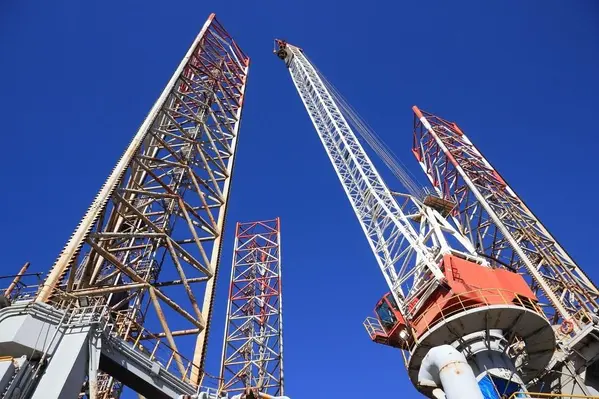

Panoro Energy ASA has announced that it has entered into agreements with Tullow Oil plc and its subsidiaries to acquire high-quality oil producing assets offshore Equatorial Guinea and Gabon for an initial aggregate cash consideration of up to US$140mn and aggregate contingent consideration of up to US$40mn, based on an effective date of 1 July 2020.
The assets in detail
The acquisitions represents a 14.25% working interest in Block G offshore Equatorial Guinea and a 10% working interest in Dussafu Marin Permit offshore Gabon. Panoro will therefore increase its net interest in its core asset Dussafu from 7.5% to 17.5% and achieves significant diversification through the entry into Block G, offshore Equatorial Guinea, which comprises six producing offshore fields through the Ceiba and Okume Complex assets.
The assets have excellent operators, low operating costs and have a reserve life of an estimated 13 years. They will add an estimated 6,900bpd net production, 25mnbbl net 2P reserves and hold a significant upside potential with 2C resources of 29mnbbl. The acquisitions will be financed through a contemplated US$70mn equity private placement and an up to US$90mn underwritten debt facility by a company within the Trafigura group.
John Hamilton, CEO of Panoro, commented, “These truly transformational acquisitions will establish Panoro as one of the world’s leading independent E&P companies focussed on Africa. We are purchasing high-quality, low operating cost assets, substantial production and material reserves in West Africa. These are highly accretive assets that deliver a major change in our operational and financial profile, and position the company well to generate sustainable long-term value for our shareholders.”
“We welcome the opportunity to increase our exposure in Dussafu, offshore Gabon, where Panoro has been an integral part of its success since 2007. In Equatorial Guinea we are new entrants and look forward to excellent cooperation and working with the field partners and the Ministry of Mines and Hydrocarbons to grow further in the country. We look forward to realising the significant upside potential that we see in these assets through an active and fully funded work programme,” Hamilton added.
Panoro's increasing presence in West Africa
With these acquisitions Panoro will hold assets in Gabon, Equatorial Guinea, Tunisia, Nigeria (prior to completion of the sale of its interests in Aje to PetroNor) and South Africa and will quadruple its 2021e production and triple its 2P reserves. This marks another step for Panoro as it seeks to establish itself as one of the leading independent E&P companies focussed on Africa.
Julien Balkany, Chairman of Panoro said, "These two very attractive and highly value accretive acquisitions perfectly complement our existing upstream E&P portfolio in West Africa and represent a major step in the execution of Panoro’s ambitious growth strategy to continue building a balanced full-cycle E&P company focused on Africa. We are proud and excited to strengthen our position in Gabon and to enter Equatorial Guinea and intend to deliver strong returns for all the stakeholders involved."
Page 7 of 8
Copyright © 2025 Offshore Network